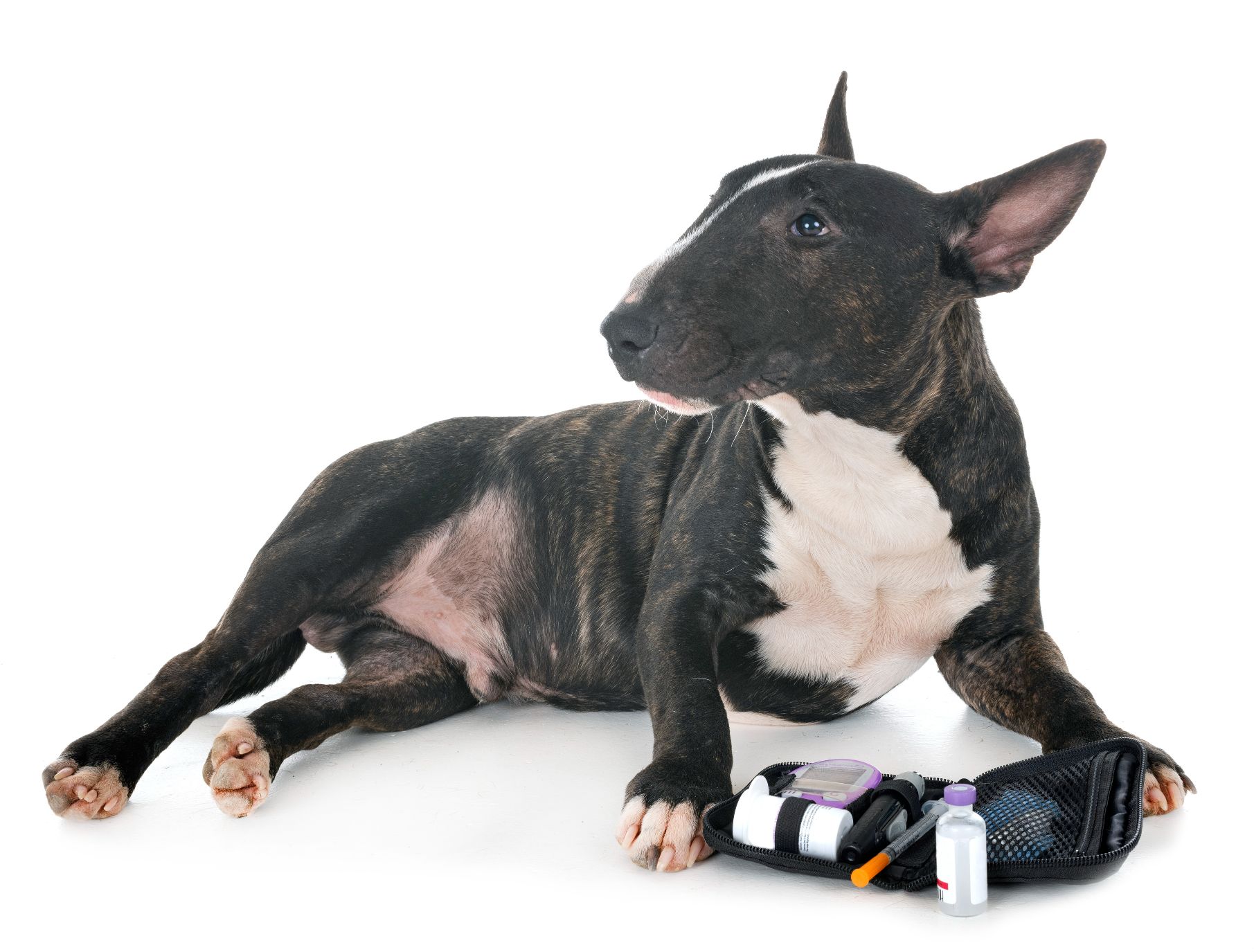When to See a Vet: Recognizing Diabetes in Dogs and Cats

While some of our pets resemble Wilfred Brimley just a bit, that’s not the only thing that they can have in common with him. Did you know that pets can be affected by diabetes, too? Learn about the signs of diabetes in dogs and cats and when it is time to call us at The Vet Gal and Guys.
What Is Diabetes Anyways?
Diabetes is a condition of the endocrine (hormone-producing) system in the body. In short, it is a disruption in the way that the body handles glucose. Glucose is a simple sugar and results from the breakdown of the carbohydrates that are taken in during a meal. Glucose is very important because all of the cells in the body rely on it as a source of energy for normal functioning.
To get glucose to the cells, the body needs insulin. Insulin is a hormone produced by an abdominal organ called the pancreas. When the pancreas releases insulin into the bloodstream, the insulin helps the glucose to gain entrance to the cells. If your car is the cell and glucose is gasoline, you might think of insulin as the gas pump.
In individuals affected by diabetes, there is either not enough insulin being produced to get the glucose to the cells or the cells need a lot more insulin than normal to utilize glucose. Whether due to lack of insulin production or insulin resistance, the result is diabetes mellitus.
Common Signs of Diabetes in Dogs and Cats
Because animals affected by diabetes are not absorbing glucose into the cells, the result is high amounts of glucose in the blood and subsequently in the urine as the body tries to get rid of it.
This, in combination with the body’s cells not getting the insulin that they need, results in some common signs of diabetes in dogs and cats. Symptoms often include:
- Increased appetite
- Weight loss
- Significant increase in thirst
- Increased urination
- Decrease in energy
- Dull, unhealthy haircoat
- Urinary tract infections
- Development of cataracts in dogs
- Impaired rear limb function (sometimes seen in cats)
While there are certainly other conditions that can have similar symptoms, most pets with diabetes exhibit some or most of these characteristics.
When to Call
Untreated, diabetes in pets can have very serious or even fatal consequences. Unchecked, it can lead to the development of diabetic ketoacidosis, resulting in a very sick animal.
It is always best to let us know if your pet is having suspicious symptoms so that we can get to work right away diagnosing the problem and helping. Once diagnosed, managing diabetes in dogs and cats is typically very doable for most pet owners.
Pet diabetes is fairly common. While we hope that you never need to deal with it, we want you to know how to recognize the signs so that you can reach out for help should you need it. We are here to help keep your four-legged friends as healthy as possible, and you should never hesitate to contact us.


